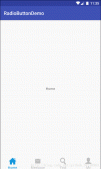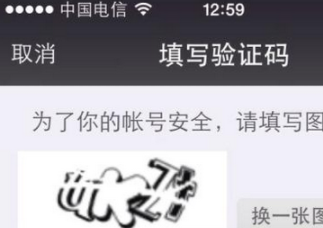本文实例为大家分享了Android实现购物车添加商品动画的具体代码,供大家参考,具体内容如下
实现需求:
在商品列表页面,从列表Item 添加商品的时候,需要一个动画,仿佛是是往购物车里添加商品。
实现思路:
- 获取起始点与终点的坐标,利用PathMeasure 绘制贝塞尔曲线;
- 为点击的Item 商品View 设置属性动画;
- 监听属性动画的update,改变View 的坐标;
实现效果:

实现中会用到 PathMeasure 类:
我们主要使用它两个方法:
1、获取长度:
|
1
2
3
4
5
6
7
|
/** //获取弧线的总长度(周长) * Return the total length of the current contour, or 0 if no path is * associated with this measure object. */ public float getLength() { return native_getLength(native_instance);//系统调用native 方法; } |
2、获取坐标:
|
1
2
3
4
5
6
7
8
9
10
11
12
13
14
15
16
17
18
|
/** * Pins distance to 0 <= distance <= getLength(), and then computes the * corresponding position and tangent. Returns false if there is no path, * or a zero-length path was specified, in which case position and tangent * are unchanged. * * @param distance The distance along the current contour to sample * @param pos If not null, eturns the sampled position (x==[0], y==[1]) * @param tan If not null, returns the sampled tangent (x==[0], y==[1]) * @return false if there was no path associated with this measure object */ public boolean getPosTan(float distance, float pos[], float tan[]) { if (pos != null && pos.length < 2 || tan != null && tan.length < 2) { throw new ArrayIndexOutOfBoundsException(); } return native_getPosTan(native_instance, distance, pos, tan); } |
方法 getPosTan(float distance, float pos[],float tan[]) - path 为 null ,返回 false
distance 为一个 0 - getLength() 之间的值,根据这个值 PathMeasure 会计算出当前点的坐标封装到 pos 中。上面这句话我们可以这么来理解,不管实际 Path 多么的复杂,PathMeasure 都相当于做了一个事情,就是把 Path “拉直”,然后给了我们一个接口(getLength)告诉我们path的总长度,然后我们想要知道具体某一点的坐标,只需要用相对的distance去取即可,这样就省去了自己用函数模拟path,然后计算获取点坐标的过程。
代码如下:
|
1
2
3
4
5
6
7
8
9
10
11
12
13
14
15
16
17
18
19
20
21
22
23
24
25
26
27
28
29
30
31
32
33
34
35
36
37
38
39
40
41
42
43
44
45
46
47
48
49
50
51
52
53
54
55
56
57
58
59
60
61
62
63
64
65
66
67
68
69
70
71
72
73
74
75
76
77
78
79
80
81
82
83
84
85
86
87
88
89
90
91
92
93
94
95
96
97
98
99
100
101
102
103
104
105
106
107
108
109
110
111
112
113
114
115
116
117
118
119
120
121
122
123
124
125
126
127
128
129
130
131
132
133
134
135
136
137
138
139
140
141
142
143
144
145
146
147
148
149
150
151
152
153
154
155
156
157
158
|
public class GoodsListActivity extends AppCompatActivity { private RelativeLayout mRootRl; private RecyclerView mGoodsRecyclerView; private ImageView mCarImageView; private TextView mCountTv; private List<Bitmap> mBitmapList = new ArrayList<>(); private PathMeasure mPathMeasure; private float[] mCurrentPosition = new float[2]; private int mCount = 0; @Override protected void onCreate(Bundle savedInstanceState) { super.onCreate(savedInstanceState); setContentView(R.layout.activity_goods_list); initView(); initData(); GoodsAdapter goodsAdapter = new GoodsAdapter(mBitmapList); mGoodsRecyclerView.setLayoutManager(new LinearLayoutManager(this)); mGoodsRecyclerView.setAdapter(goodsAdapter); } private void initView(){ mGoodsRecyclerView = (RecyclerView)findViewById(R.id.recyclerView); mCarImageView = (ImageView)findViewById(R.id.imageview_shop_car); mCountTv = (TextView)findViewById(R.id.tv_count); mRootRl = (RelativeLayout)findViewById(R.id.rl_root); } private void initData(){ mBitmapList.add(BitmapFactory.decodeResource(getResources(), R.drawable.car)); mBitmapList.add(BitmapFactory.decodeResource(getResources(), R.drawable.car)); mBitmapList.add(BitmapFactory.decodeResource(getResources(), R.drawable.car)); } class GoodsAdapter extends RecyclerView.Adapter<GoodsViewHolder>{ private List<Bitmap> mData; public GoodsAdapter(List<Bitmap> data) { mData = data; } @Override public GoodsViewHolder onCreateViewHolder(ViewGroup parent, int viewType) { View itemView = LayoutInflater.from(GoodsListActivity.this) .inflate(R.layout.rv_goods_item, parent, false); return new GoodsViewHolder(itemView); } @Override public void onBindViewHolder(final GoodsViewHolder holder, int position) { holder.ivGood.setImageBitmap(mData.get(position)); holder.tvBuy.setOnClickListener(new View.OnClickListener() { @Override public void onClick(View v) { addGoodToCar(holder.ivGood); } }); } @Override public int getItemCount() { return mData != null ? mData.size() : 0; } } private void addGoodToCar(ImageView imageView){ final ImageView view = new ImageView(GoodsListActivity.this); view.setImageDrawable(imageView.getDrawable()); RelativeLayout.LayoutParams layoutParams = new RelativeLayout.LayoutParams(100, 100); mRootRl.addView(view, layoutParams); //二、计算动画开始/结束点的坐标的准备工作 //得到父布局的起始点坐标(用于辅助计算动画开始/结束时的点的坐标) int[] parentLoc = new int[2]; mRootRl.getLocationInWindow(parentLoc); //得到商品图片的坐标(用于计算动画开始的坐标) int startLoc[] = new int[2]; imageView.getLocationInWindow(startLoc); //得到购物车图片的坐标(用于计算动画结束后的坐标) int endLoc[] = new int[2]; mCarImageView.getLocationInWindow(endLoc); float startX = startLoc[0] - parentLoc[0] + imageView.getWidth()/2; float startY = startLoc[1] - parentLoc[1] + imageView.getHeight()/2; //商品掉落后的终点坐标:购物车起始点-父布局起始点+购物车图片的1/5 float toX = endLoc[0] - parentLoc[0] + mCarImageView.getWidth() / 5; float toY = endLoc[1] - parentLoc[1]; //开始绘制贝塞尔曲线 Path path = new Path(); path.moveTo(startX, startY); //使用二次萨贝尔曲线:注意第一个起始坐标越大,贝塞尔曲线的横向距离就会越大,一般按照下面的式子取即可 path.quadTo((startX + toX) / 2, startY, toX, toY); mPathMeasure = new PathMeasure(path, false); //属性动画 ValueAnimator valueAnimator = ValueAnimator.ofFloat(0, mPathMeasure.getLength()); valueAnimator.setDuration(1000); valueAnimator.setInterpolator(new LinearInterpolator()); valueAnimator.addUpdateListener(new ValueAnimator.AnimatorUpdateListener() { @Override public void onAnimationUpdate(ValueAnimator animation) { float value = (float)animation.getAnimatedValue(); mPathMeasure.getPosTan(value, mCurrentPosition, null); view.setTranslationX(mCurrentPosition[0]); view.setTranslationY(mCurrentPosition[1]); } }); valueAnimator.addListener(new Animator.AnimatorListener() { @Override public void onAnimationStart(Animator animation) { } @Override public void onAnimationEnd(Animator animation) { // 购物车的数量加1 mCount++; mCountTv.setText(String.valueOf(mCount)); // 把移动的图片imageview从父布局里移除 mRootRl.removeView(view); //shopImg 开始一个放大动画 Animation scaleAnim = AnimationUtils.loadAnimation(GoodsListActivity.this, R.anim.shop_car_scale); mCarImageView.startAnimation(scaleAnim); } @Override public void onAnimationCancel(Animator animation) { } @Override public void onAnimationRepeat(Animator animation) { } }); valueAnimator.start(); } class GoodsViewHolder extends RecyclerView.ViewHolder{ private ImageView ivGood; private TextView tvBuy; public GoodsViewHolder(View itemView) { super(itemView); ivGood = (ImageView)itemView.findViewById(R.id.iv_goods); tvBuy = (TextView) itemView.findViewById(R.id.tv_buy); } }} |
以上就是本文的全部内容,希望对大家的学习有所帮助,也希望大家多多支持服务器之家。
原文链接:https://blog.csdn.net/happy_horse/article/details/67646202
















